As the days get shorter and the flowers fade, I have started to focus on some tough little plants – liverworts! Liverworts are small spore-producing plants in the Marchantiophyta, a phylum that includes 5,000 to 10,000 species (1). Liverworts differ from flowering plants as liverworts are haploid (only one set of chromosomes) while flowering plants are diploid (two sets of chromosomes). Liverworts do have diploid structures that grow from the main haploid plant. These diploid structures produce spores that are dispersed and grow into new (haploid) plants (Ralph Pope, Mosses, Liverworts and Hornworts: A Field Guide to Common Bryophytes of the Northeast, 2016).
If you are trying to identify liverworts, it is important to know that there are two very different forms – the complex, vine-like leafy liverworts and the flat, flap-like thalloid liverworts. These two forms look different, but both have liverwort characteristics such as single-cell rhizoids (root-like hairs). Leafy liverworts can be confused with other spore-producing plants. Leafy liverworts can look like moss, but moss usually have a prominent midrib (costa) on their leaves. Moss often have pointed leaves that are arranged around the steam, while liverworts usually have rounded leaves that are only on two sides of the stem (Janice Glime, Bryophyte Ecology E-book).
This post will focus on leafy liverworts, while the next one will focus on thalloid liverworts.
The greater whipwort (Bazzania trilobata, Lepidoziaceae) is a highly branched leafy liverwort with dark green leaves. The shiny leaves point downward and each leaf has three points. Small ‘branchlets’ form near the edge of main branches. This species is found on rich soil or rotting wood in shaded forests.

The little ‘branchlets’ are indicative of the greater whipwort (Bazzania trilobata, Lepidoziaceae)
The variable-leaved crestwort (Lophocolea heterophylla, Lophocoleaceae) is a light green liverwort with leaves that have two points. This leafy liverwort is found growing on decaying wood. Many plants have beautiful fringed perianths, which protect the developing diploid parts.
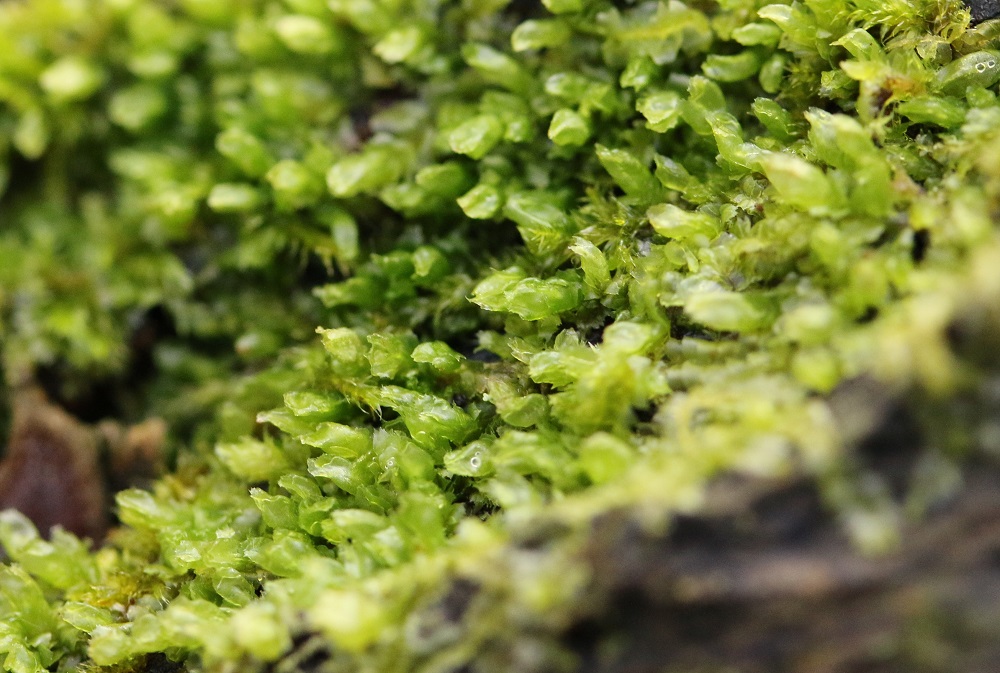
The fringed perianths of the variable-leaved crestwort can be seen rising above the rotting wood (Lophocolea heterophylla, Lophocoleaceae)
The lesser featherwort (Plagiochila porelloides, Plagiochilaceae) is one of the few leafy liverworts with leaves that clearly extend down the stem (the botanical term is decurrency). The leaves are rounded with small teeth and they curl up when dry. This species is found growing on rocks.
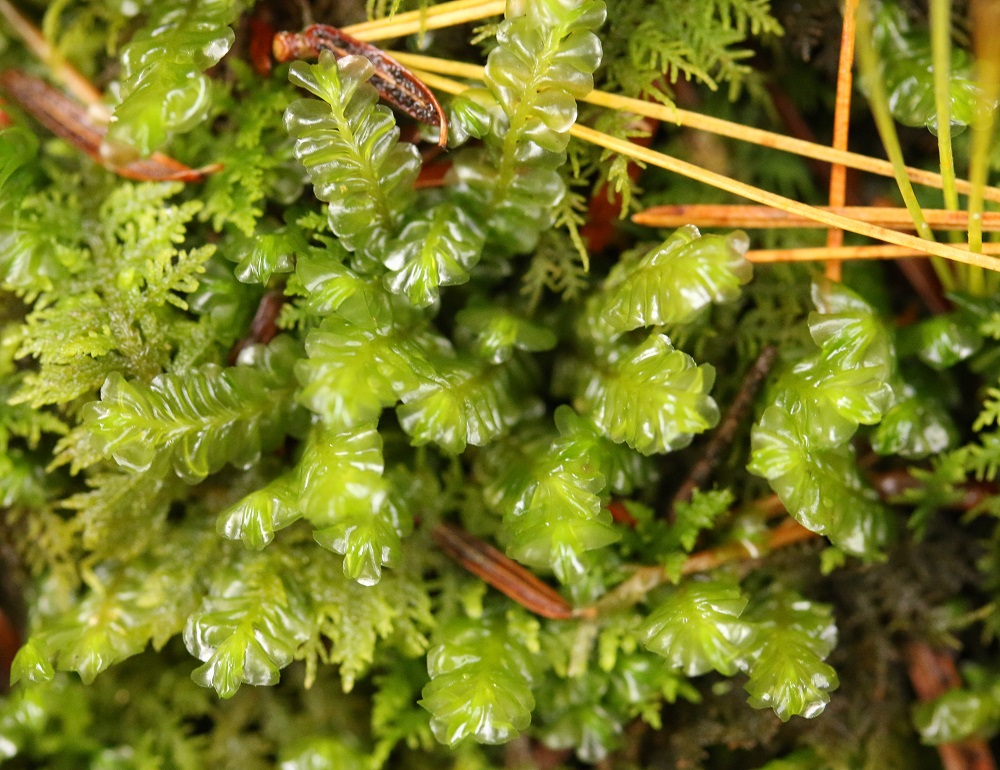
The rounded leaves of the lesser featherwort are an easy way to identify them (Plagiochila porelloides, Plagiochilaceae)
The wide-leaved scalewort (Porella platyphylloidea, Porellaceae) is even more branched than the greater whipwort (Bazzania trilobata). The leaves are incubous, which means that the older leaf lies on top of the newer leaf going up the stem. This leafy liverwort is found hanging off of tree trunks and moist rocks.
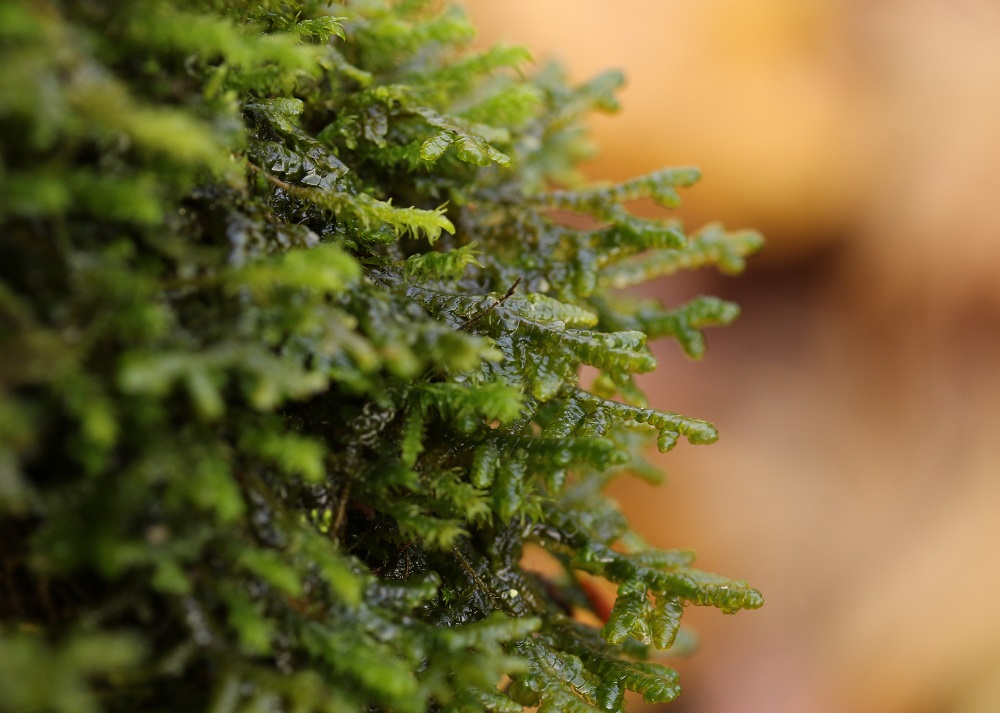
Wide-leaved scaleworts are highly branched (Porella platyphylloidea, Porellaceae)
The flat-leaved scalewort (Radula complanata, Radulaceae) is a small, bright green leafy liverwort with incubous leaves. This species often has round gemmae (vegetative structures that can break off and form new plants) along the edges of the leaves. This liverwort has flat square perianths at the end of the branches. These perianths are usually larger than the leaves. This species is found on bark, rotten wood and rock.
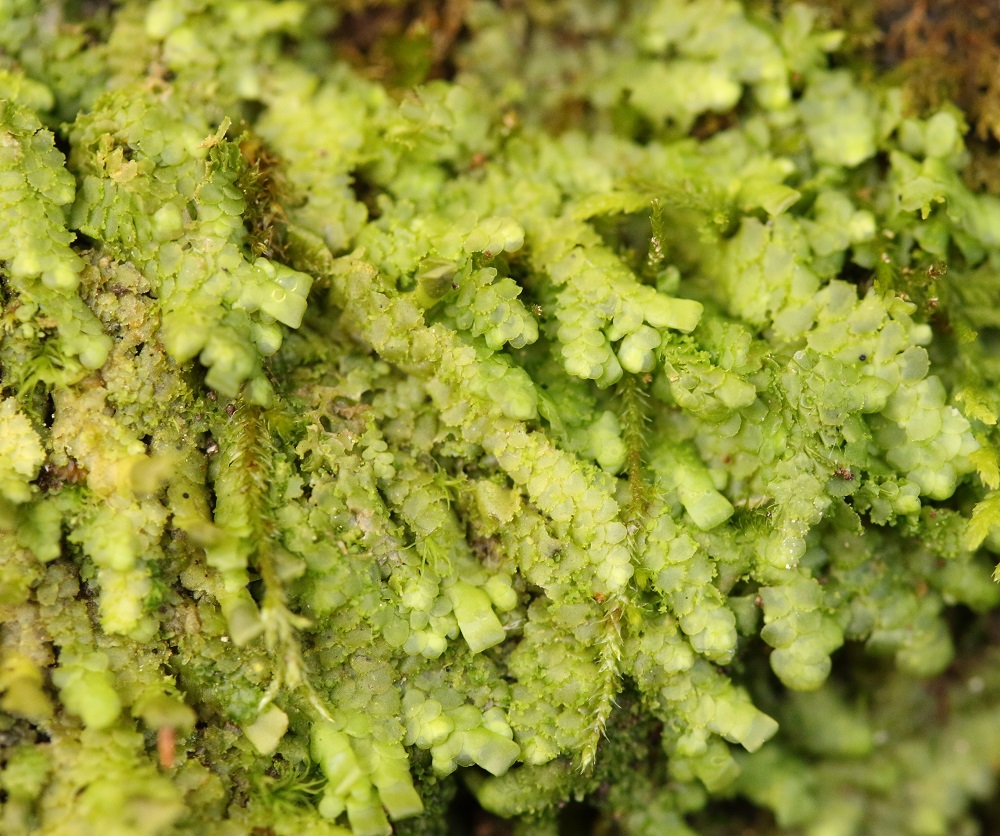
Little gemmae are seen along the edges of flat-leaved scalewort leaves (Radula complanata, Radulaceae)
The grove earwort (Scapania nemorea, Scapaniaceae) is another small, light green leafy liverwort. This species has toothed leaves which end in brown gemmae clusters. This species is found on rocks near seeps or along streams.
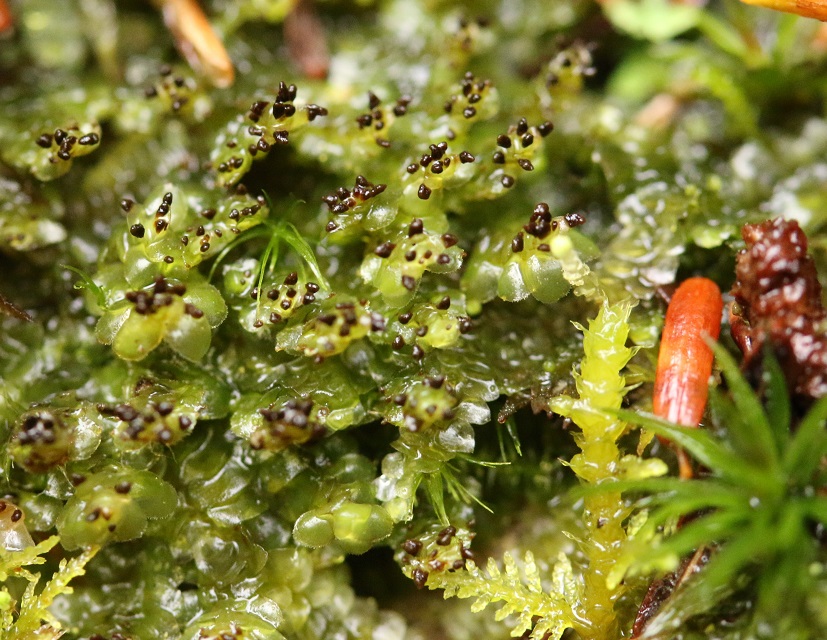
The gemmae clusters at the end of the branches are an identifying characteristics of the grove earwort (Scapania nemorea, Scapaniaceae)
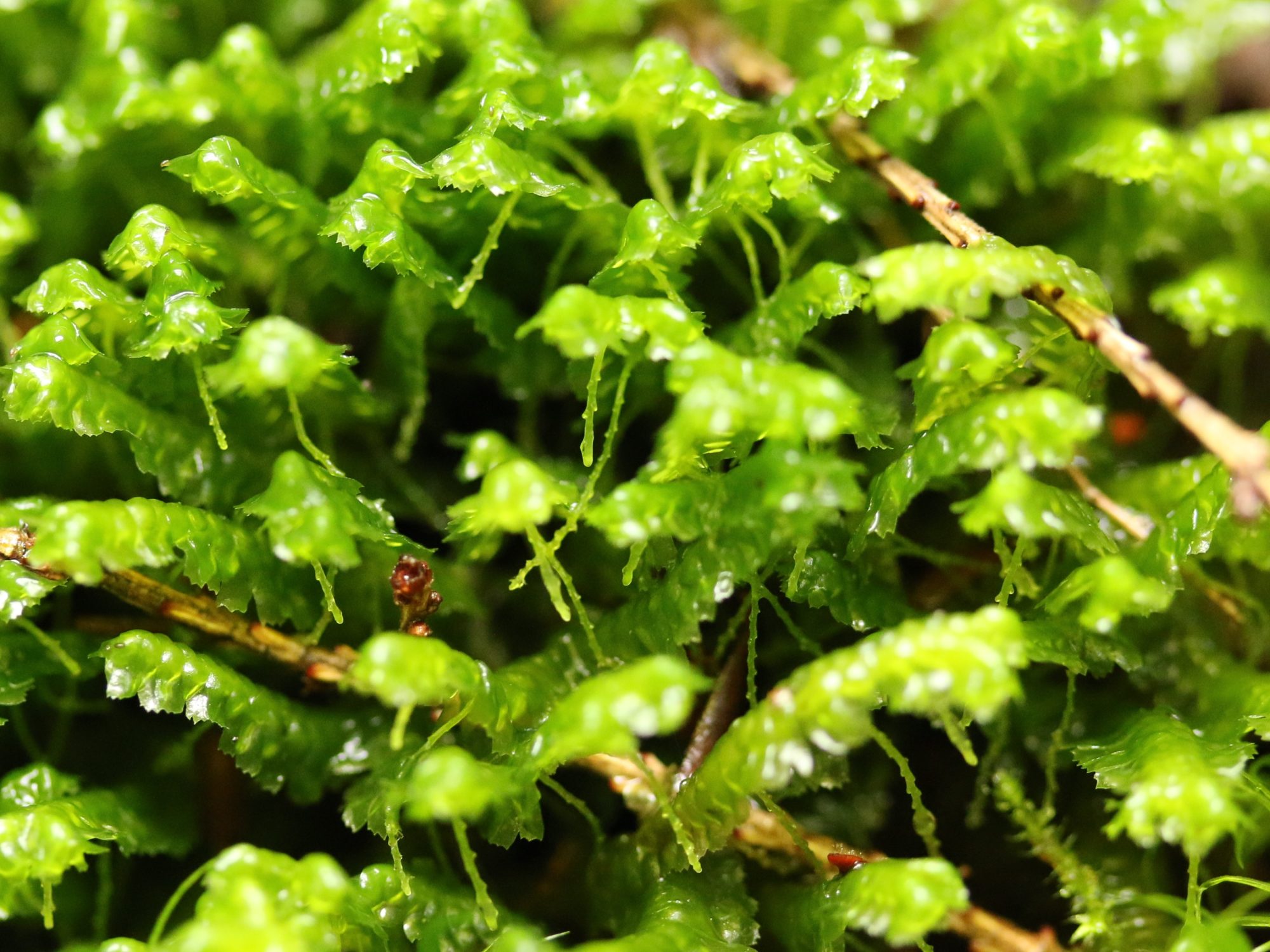
One thought on “Leafy liverworts”